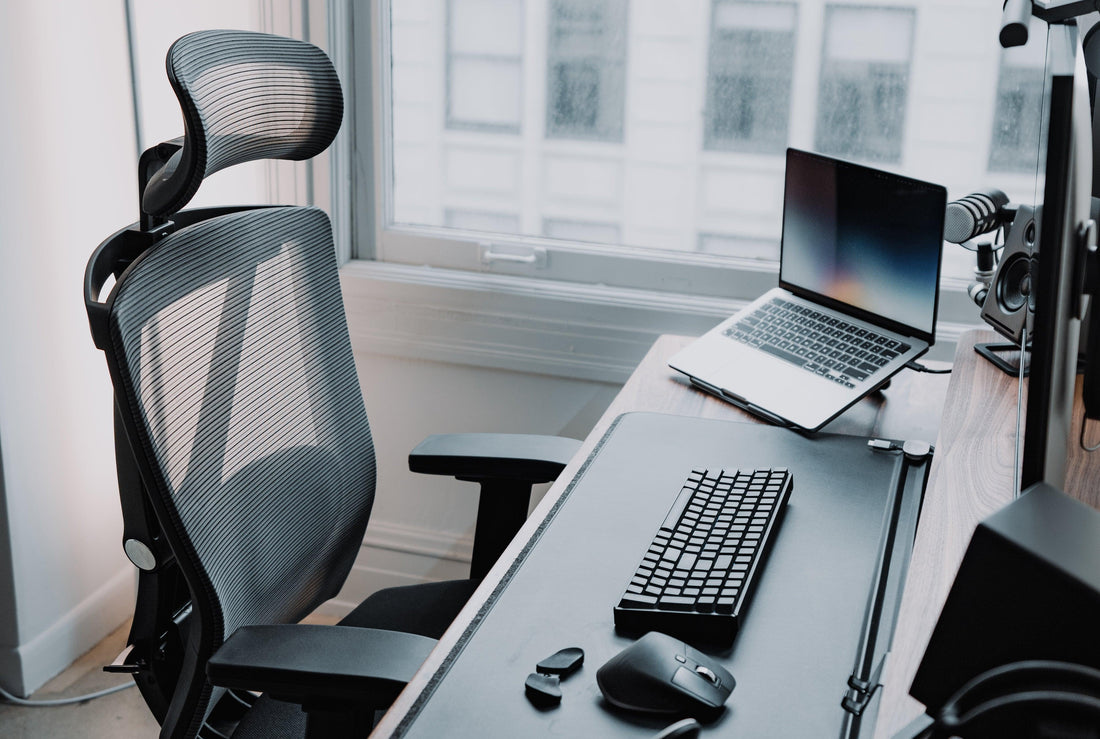
How to Set Up and Use Your New Ergonomic Chair Correctly
EFFYDESK TEAMShare
You've just purchased an office chair and you're likely anxious to get it set up and start using it. But before you do, you might be wondering what the best way to set up and use your ergonomic chair is to optimize its health benefits.
How much time should I spend sitting or standing?Should I use a mat when standing and how do I set up my chair when sitting?
There is a lot to think about, but ignoring basic ergonomic principles won't get you the full benefit from your investment.
In this blog post, I'll walk you through the steps of setting up and using your new chair and show you how to adjust the height and position so that you can stay comfortable while working.
The Problem with Sitting

Sitting is a sedentary behaviour that can cause muscle and bone problems (1), and too much of it leads to increased all-cause mortality: cardiovascular disease mortality, cancer risk, and risks of metabolic disorders such as diabetes mellitus, hypertension, and dyslipidemia; musculoskeletal disorders such as arthralgia and osteoporosis; depression; and, cognitive impairment (2).
It’s more important than ever to get movement in our day and standing desks help workers achieve this. Alternating between sitting and standing will build movement into the standing desk users’ day, preventing injury and disease when set up and used correctly. Movement is related to ergonomics as subsets of human function.
Ergonomics for Standing Desks
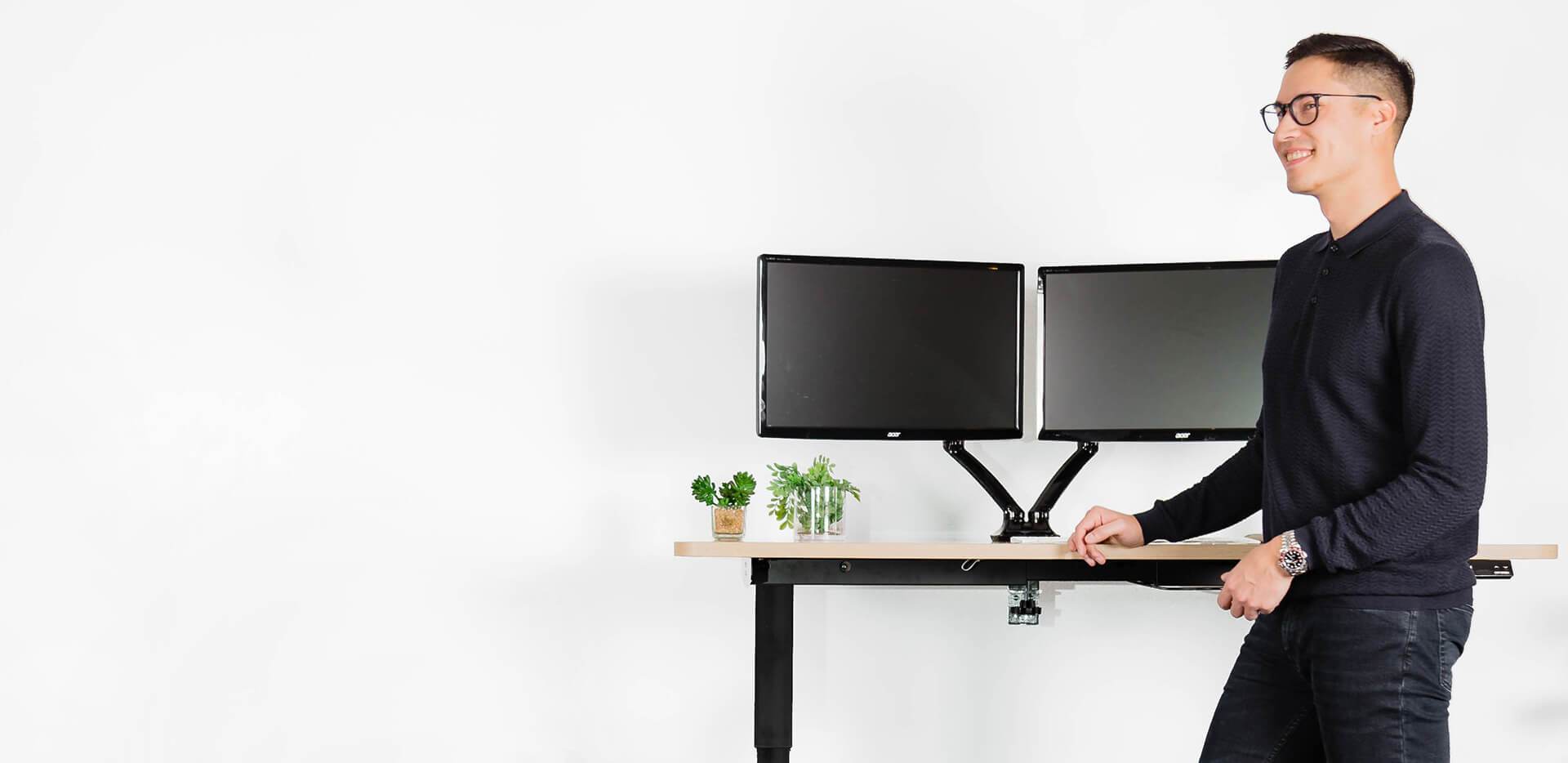
Ergonomics are basic principles for properly fitting our environment to our body to prevent pain and even injury from performing an activity over long periods of time. When setting up and using a standing desk it’s important to follow ergonomic best practices because improper usage might lead to increased back pain, canceling potential health benefits from using the desk in the first place.
The good news is that Symmetrix is here to help. We are a team of kinesiologists; movement experts with 30 years of experience helping people overcome injuries and get active. The following basic ergonomics tips will help you get the most out of using your standing desk.
This guide is broken down into 5 parts to completely set up your workstation from the ground up:
How to ergonomically set up your chairHow to find the right desk height for sitting and standing positionsPositioning your peripherals (keyboard and mouse)Setting your monitor HeightHow often to switch between sitting and standingEach section builds on the previous, so we invite you to read through, or skip to the section that you need most. In most cases an ergonomic setup starts at your foundation, your chair and feet.
How to Ergonomically Set Up Your Chair
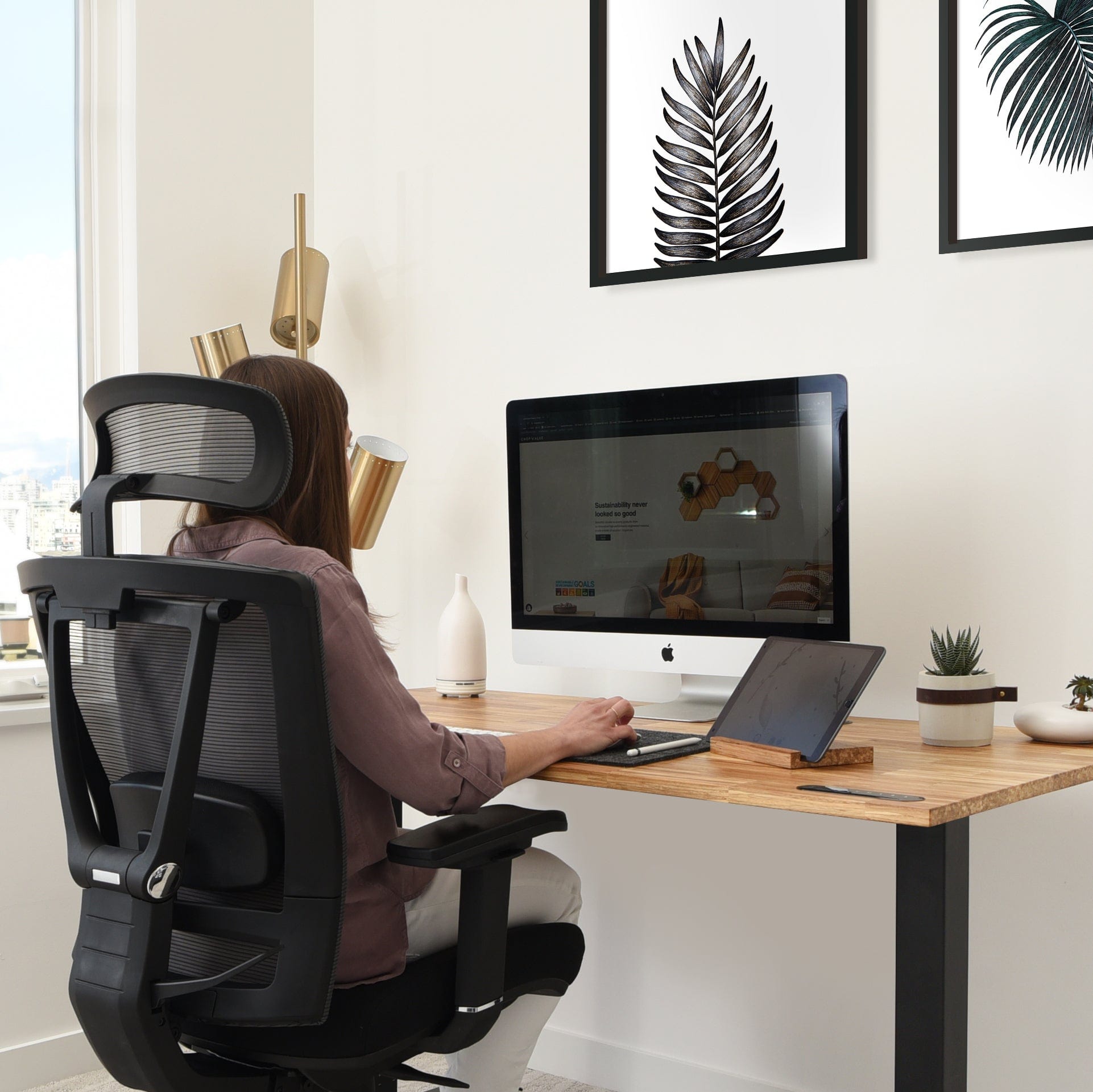
It's no secret that sitting for extended periods of time is bad for your health. But where do you start with your set-up, and what about your office chair?
Since you’ll be spending roughly equal time sitting and standing, setting up the chair first is important because it sets your foundation for the rest of your ergonomic set up.
To optimize your standing desk set-up, we’ll start at the feet, and work our way upwards from the sitting position. We’ll start with setting up for a typical ergonomic office chair, with some tips at the end if you are using a non-ergonomic chair.

Get to know your office chair
Find all the levers and buttons, and identify all the possible adjustments which typically exist for the lumbar support. These are usually height, seat pan depth, armrest and headrest.
Not all chairs will have all these adjustments. I will show you workarounds if you are missing any important adjustments.
Feet and foot rest
We’ll start at our feet (our foundation) because we want our feet flat on the floor in front of our knees. This will help keep you back in your chair with your back supported. Use a foot rest if your feet don’t touch the ground with the chair’s lowest setting.
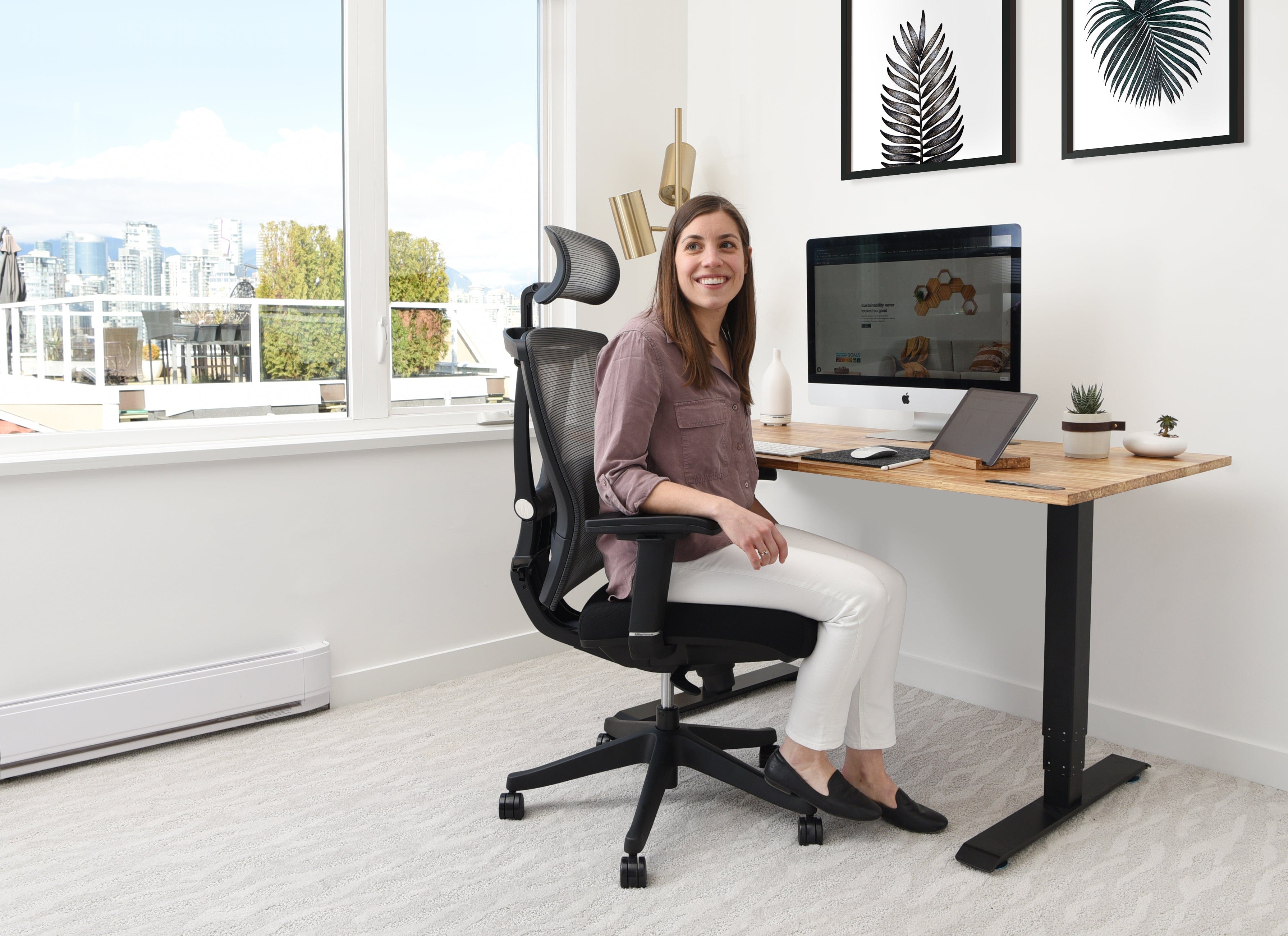
Chair height

Seat pan
Next is the seat pan: you want to put your bum back as far as you can into your chair and have 3 finger widths between the back of your knees and the chair. The back of your knees are sensitive and will become irritated if they’re in constant contact with your chair. Adjust your seat pan to allow for this space when sitting back into the seat.
If your chair is too long and you can’t adjust the seat pan any further back, you’ll need to add a backrest to be able to bring your body forward enough.

Lumbar support
Lumbar support is available on most office chairs, and is very important to keep your shoulders from rounding forward. To identify the height for your lumbar support, scoot forward, and feel the more concave (curved inward) part of your lower back.
The middle of that curve should be the middle of your lumbar support - adjust it on your chair to match. You’ll know when there is enough support because it should feel super comfortable when you sit back into your chair.
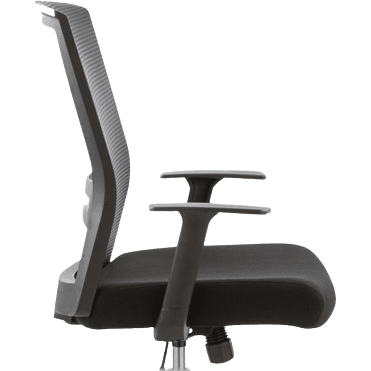
Backrest
Leaning back into your chair is important, the chair should do the work to keep you upright. If you sit too far forward and your body will lean forward and tire out your back and core. And if you’re sitting too far back for long periods and reaching out to your keyword you will experience strain on your arms and shoulders.
To achieve the perfect support, adjust the back of your chair on a slight incline backwards so that you feel that it is pushing back against you when you are in a neutral position. It’s hard to focus and work when you’re reclined. Rather, find your “preferred” position that keeps your feeling alert and focused, but relaxed in their body.
The back of your shoulders should touch the back of your chair. That helps prevent a slouched or head-forward forward posture. By keeping your chest and front side open you will prevent strain on your back. Be mindful of the back of your posture by making sure your shoulder blades are touching your chair throughout the day.
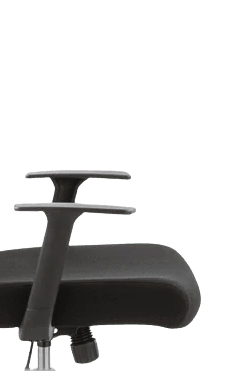
Armrests
You want your shoulders to be relaxed, and elbows supported with your elbows at your side. Everyone’s body is a different width and chairs tend to fit too large, leaving most of our elbows a bit far from our body.
If your armrests are too far from your body your shoulder will become tired over time. If the armrests move sideways, adjust them inwards to allow your arms to rest comfortably as close to your sides as is possible. On some chairs you might achieve this by rotating the armrests inwards.

Headrest
Tips for using your chair
Tips for using a non-ergonomic chair
Some office chairs lack the adjustments above, or maybe you're using a kitchen chair for now and are looking to troubleshoot. Here are a few tips:
Use pillows to increase the chair height or as a back rest. These will help make adjustments for your seat height and seat pan depth.Use a footrest like a small box or phone book for a chair that’s too tallFor lumbar support, roll up a hand towel and place it in the concave part of your spineIf you still have questions about your chair or if you have discomfort or back pain while using your new desk, you can connect with us for an ergonomic assessment. Something that might help you on your journey is this free resource: 13 standing desk stretches